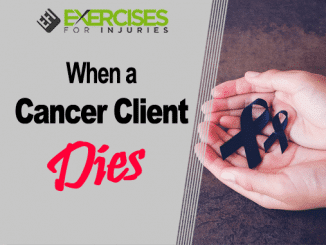
There is no “one size fits all” regarding cancer and its treatments. Everyone has unique needs, and that includes their exercise routine. Some patients cannot participate in high-intensity activities due to side effects of their treatment, such as nausea or fatigue. Others have specific limitations such as balance issues or weakness from surgery or chemo. If you’re reading this article, you are likely researching ways to manage your cancer through healthy habits. This means exercise is a good thing! But not all exercises are created equal in the fight against cancer. Certain types of workouts can be harmful to those with cancer. If you’re just learning about the benefits of exercise for fighting cancer or trying to figure out which exercises are safe for you as a cancer patient, this article is for you.
Running and Jumping Exercises to Avoid While Fighting Cancer
Running is a great way to build cardiovascular fitness, but it can harm people with certain cancers. Certain types of cancer, such as lung, breast, and colon cancer, can spread through your bloodstream and lymph nodes to other parts of your body. This is called metastasis. Running can increase your blood flow, which can help cancer cells travel more quickly through your body. Running can also increase your heat levels and put your immune system at risk. Jumping exercises such as basketball are also linked to higher rates of disease recurrence and cancer deaths. This is due to the increased blood flow and elevated heat levels, which can help cancer cells travel more quickly through your body. Jumping exercises can also strain your joints significantly, which may be too much if you are experiencing side effects from cancer treatments such as joint pain or weakness.
Exercise is one of the best things you can do for your mind and body. It can help you manage cancer symptoms, improve your mood, and improve your quality of life. But not all exercises are created equal. They can help you find a safe exercise routine that improves your quality of life and reduces stress. Some activities can cause more damage than good, especially for those with joint pain and knee pain. Before starting a new exercise routine, discussing it with your doctor is essential.
I am continuing my interview with Dean Somerset about cancer exercises and fitness professionals.
What three activities should fitness professionals not do with a client recovering from cancer?
#1 – Watch For Dizziness
The exercises can be the same as with someone who doesn’t have cancer. A significant consideration is what might make them dizzy and what kind of grip they need with the exercise. Suppose they are doing considerable muscle group work that will cause their blood pressure to rise and fall rapidly. In that case, they may become dizzy, more so than a non-cancer patient, and the dizziness may be more severe and last longer, so be sure to build up to significant muscle movements and intensities.
#2 – Look at Their Grip
For grip, when a cancer patient gets systemic inflammation due to the treatments they are undergoing, they might get very swollen joints, especially in their fingers and hands. Gripping a dumbell, cable, or elastic band might be a big problem, so altering the grip might be necessary. I’ve had great success wrapping a small hand towel around the handle to increase the diameter and make it easier to grip without straining their hands too much.
#3 – Consider Balance
Another significant consideration comes back to balance. As mentioned earlier, the chance of becoming dizzy can be significantly increased, balance can be negatively altered as a result, and the nerves can be beaten up pretty badly due to chemo. Improving balance can be done, but it has to be measured carefully and progressed on days apart from their last treatment. Generally, if they have therapy on Monday, they shouldn’t do much intense or challenging work until Monday to recover from their treatments’ most severe side effects.
Thanks, Dean.
Before Dean and I wrap up this part of the interview –
Here is a video clip from The Ultimate Training Guide for Cancer Survivors:
Rick Kaselj, MS
P.S. – Other posts related to cancer and exercises are:




